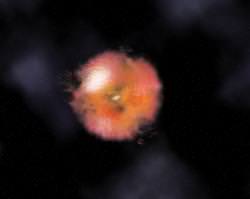As you probably know by know, there seem to be supermassive black holes lurking at the centre of probably every galaxy in the Universe. Sometimes these monsters are quiet, and other times they flare with the light of millions of stars. That’s during their active phase, when they’re busily feeding on infalling material.
Since they’re some of the brightest objects in the Universe, astronomers thought they understood all the different forms they can take: quasars, blazars, and Seyfert galaxies. An international team of astronomers have turned up a new form that had escaped detection until now.
This new class of objects was discovered using NASA’s Swift satellite and the Japanese/U.S. Suzaku X-ray observatory. They hid from observers for so long because the active nuclei are shrouded in a halo of gas and dust, so that no visible light can escape. Under Hubble’s view in the visible and ultraviolet spectra, they’re effectively invisible.
But switch to another wavelength, in this case X-rays, which can pierce this gas and dust, and the shrouded objects reveal themselves.
And here’s the big problem. Astronomers have performed surveys of active nuclei in the past, but these numbers must be heavily skewed to objects that were actually visible. If you factor in all these shrouded objects, it could change the picture of how supermassive black holes and their host galaxies have changed over time.
Original Source: NASA News Release

